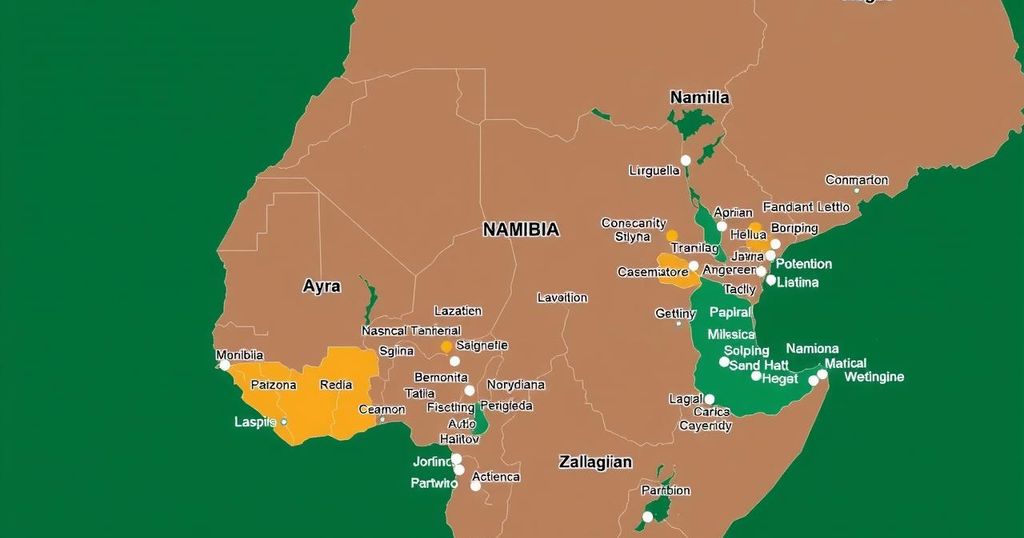Namibia Election 2023: A Crucial Test for SWAPO and Young Voters

Namibia is poised for a critical election on Wednesday, with the ruling SWAPO party facing challenges from economic discontent and growing opposition. As over 40 percent of voters are under 35, young people’s interest in politics is crucial. The outcome could either consolidate SWAPO’s power or signal a significant shift, particularly with the possibility of electing the country’s first female president.
On Wednesday, Namibia holds an election that poses a significant challenge to the ruling South West Africa People’s Organization (SWAPO), which has been in power since the country’s independence in 1990. The political landscape has shifted dramatically in southern Africa, where several liberation parties have seen declining support amid economic hardships such as high unemployment, corruption, and a housing crisis. Recent voter trends signal a dissatisfaction with these long-standing parties, exemplified by the setbacks faced by the African National Congress in South Africa and the Botswana Democratic Party in neighboring Botswana.
Namibia’s upcoming election is pivotal as it marks a potential turning point for SWAPO, particularly with more than 40 percent of the registered voters being under the age of 35. Although SWAPO has attempted to appeal to younger voters by engaging popular artists for campaign rallies, experts indicate that younger constituents often face challenges in translating their registration into actual votes. Amidst a backdrop of economic distress, many Namibians express discontent over land ownership and housing shortages, fuelling uncertainty about SWAPO’s electoral fortunes.
However, the election could see SWAPO maintain its dominance, particularly because 14 other candidates are vying for the presidency, which may dilute the opposition vote. The anticipated race pits SWAPO’s candidate, Netumbo Nandi-Ndaitwah, against former member Panduleni Itula, who is now the head of the Independent Patriots for Change. Should Nandi-Ndaitwah prevail, it would represent a historic election as she is poised to become Namibia’s first female president.
As the country prepares to vote, analysts emphasize that the outcome will reveal whether the historical loyalty to liberation movements can withstand the economic realities faced by the populace. The election results, expected within five days, will be closely monitored both locally and internationally as they may signal broader political trends across southern Africa.
The current political environment in southern Africa reflects a growing disenchantment with liberation parties, many of which led the struggle against colonial rule. The SWAPO party in Namibia, which has been in power since independence, now faces significant challenges including high unemployment, widespread corruption, and a substantial housing shortage. Societal discontent is exacerbated by perceived government failures in addressing crucial issues such as land ownership. This election serves as a referendum on SWAPO’s governance and its ability to resonate with a new generation of voters who are increasingly prioritizing socio-economic issues over historical loyalty.
The upcoming election in Namibia serves as a critical test for the ruling SWAPO party amidst a backdrop of declining support for liberation movements across southern Africa. Although SWAPO may capitalize on the fragmentation of the opposition, the participation and preferences of young voters could reshape the electoral outcome. With either a historic election of Namibia’s first female president or a significant victory for the opposition at stake, the election results promise implications not only for Namibia but for the broader political landscape in southern Africa.
Original Source: www.nytimes.com







